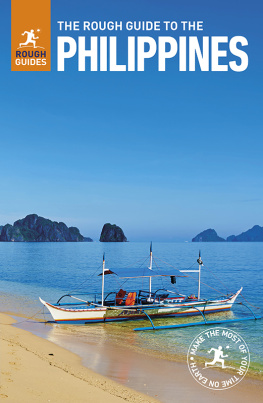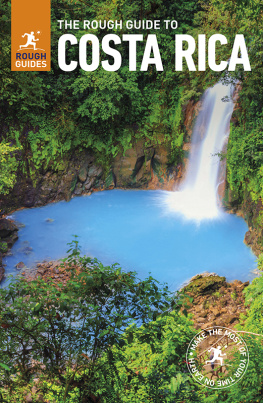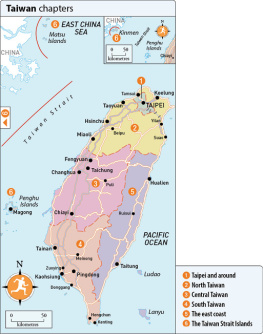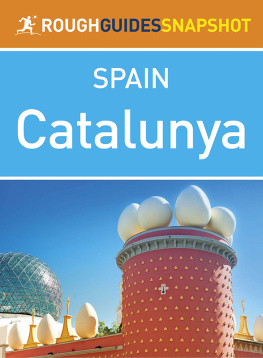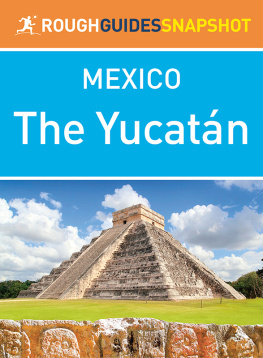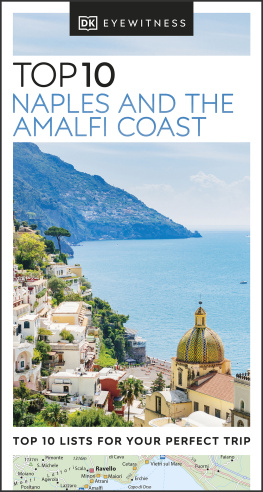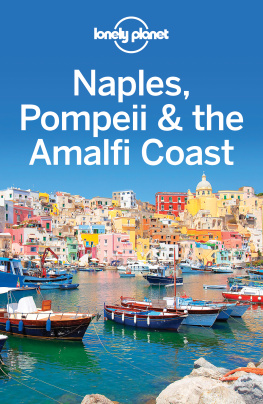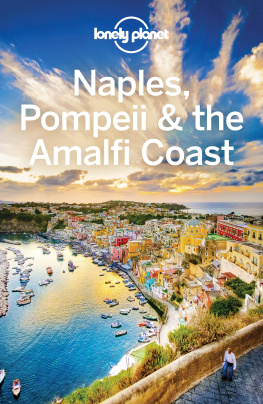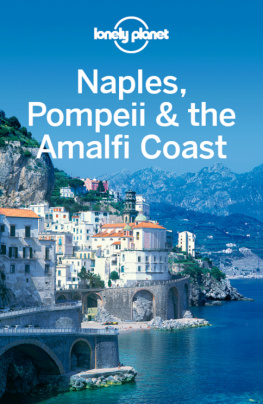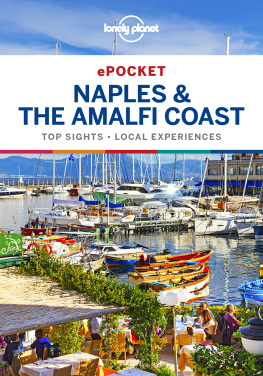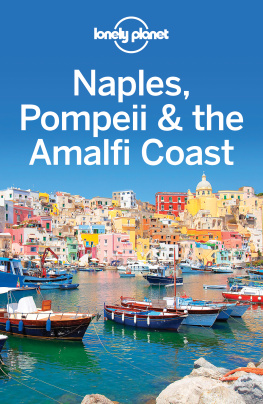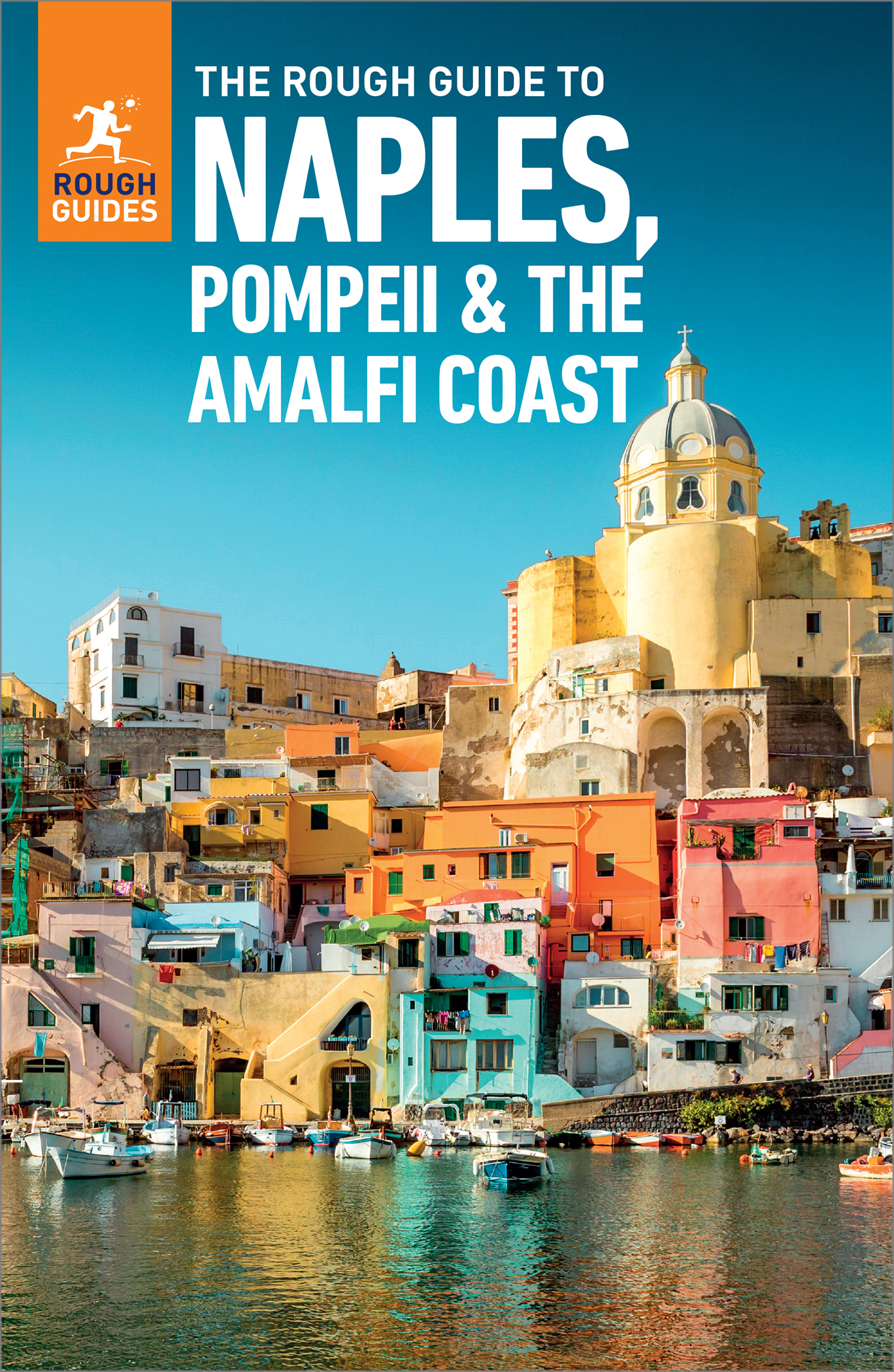Contents
Introduction to Naples, Pompeii and the Amalfi Coast
A chaotic, dynamic and mesmerizing metropolis, Italys third-largest city after Rome and Milan couldnt be more different from its northern counterparts. Quite unlike anywhere else in Italy, or indeed the world, it will frustrate and thrill in equal measure, and will soon have you under its spell. In addition to its sheer chutzpah, the citys stunning location on the Bay of Naples within easy reach of some of Europes greatest archeological sites, the fabled islands of the bay itself, and Italys most jaw-dropping stretch of coast make it one of Italys absolute must-sees.
Naples and its region are undeniably appealing, with a huge variety of things to see and do, but the city certainly comes with baggage. Plenty of Italians have never been here, and swear that they never will. Internationally, too, its reputation is traditionally not strong, and has perhaps only worsened as its longtime struggles against organized crime have been broadcast far and wide through popular books, movies and television series. You may feel the same, and, quite honestly, its easy to visit Pompeii and Herculaneum , the islands and the Amalfi Coast and barely set foot in the city itself. But to do that would be to miss somewhere special, a destination that just two centuries ago was one of the largest cities in Europe and a must-visit for any self-respecting Grand Tourist. With Italian Unification, its power waned, and its fortunes over the twentieth century mirrored those of the wider Italian south, marred by poverty, corruption and stuttering economic growth. These days, however, its on the upswing, and, truth be told, just as accessible for travellers as and no more dangerous than anywhere else in Italy. Naples also provides a vibrant and fascinating base for seeing many of the nearby attractions, with an integrated transport network around the Bay of Naples that makes it a perfect half of a two-centre holiday. Spend time here before heading off for the more bucolic delights nearby you wont regret getting to know one of Europes great undiscovered tourist destinations.
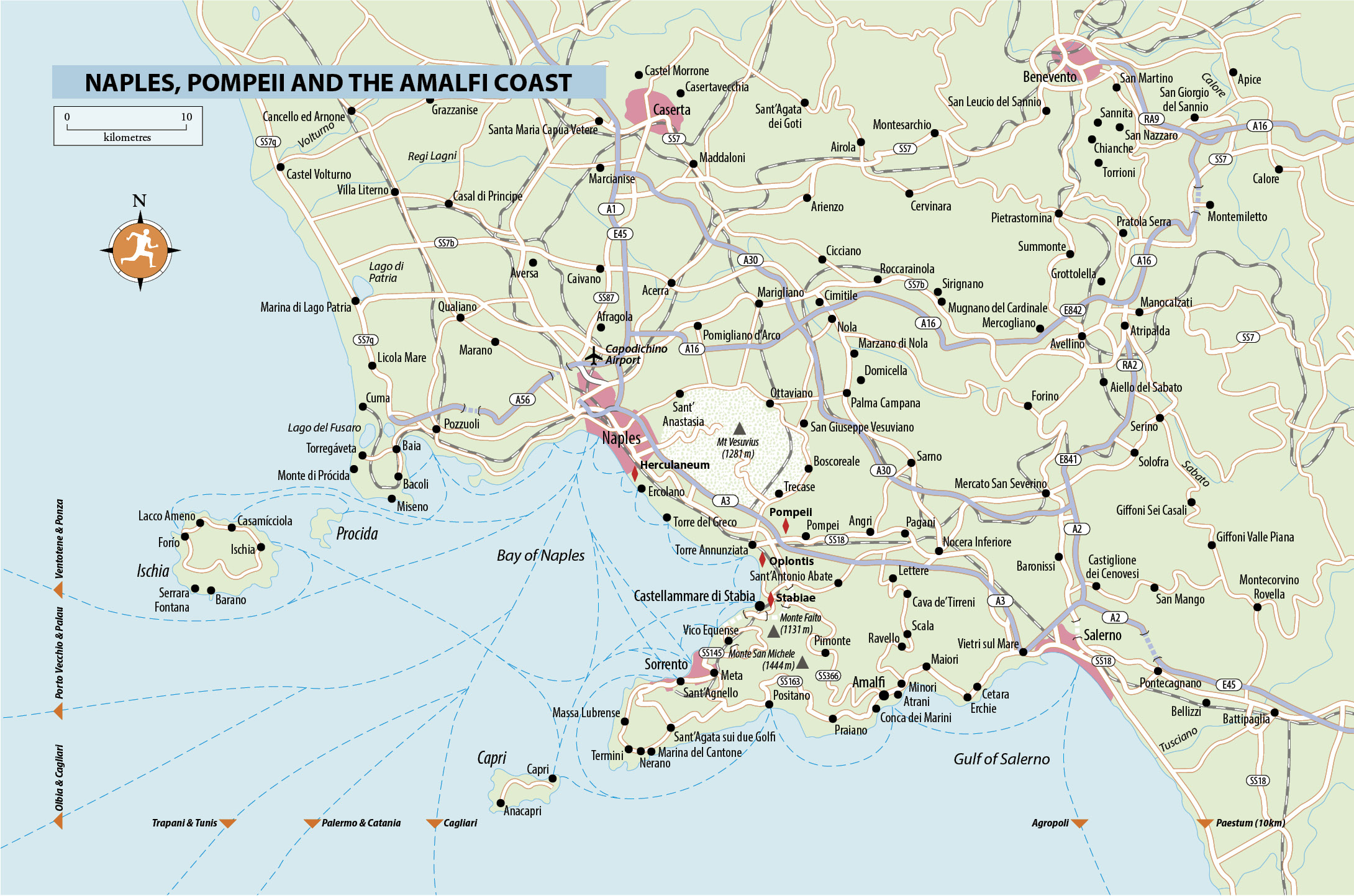
Where to go
The diversity of attractions in Naples and its region means that time permitting you can pack a lot into your holiday. With just a weekend to spare, Naples makes a great city-break option, giving you the right amount of time to cover the main sights and wander the atmospheric ancient centre; if you have a week at your disposal, you could also take in some of the bays famous archeological sights, as well as spend a couple of days island-hopping or following the dramatic coast road to the towns around Amalfi. Any longer than this and you can explore the city, coast and islands at your leisure, with great public transport connections cutting travelling (and driving) time to a minimum.
If Naples is your base, head straight for the Centro Storico , a Unesco World Heritage Site whose dead-straight streets follow the grid of the ancient Greek and Roman settlements on which the city was founded. This area is Naples spiritual heart, home to an array of churches and palaces, and a street-level commerce that couldnt be further from the homogenized centres of many of Europes major cities. The big museums and attractions are elsewhere, but if you experience only one thing in the city, it should be this. Beyond the old centre, Via Toledo is the modern hub of Naples, a busy shopping street that leads up from a cluster of portside attractions the Palazzo Reale , Teatro di San Carlo and Castel Nuovo , among others to the Museo Archeologico Nazionale , one of the great museums of Europe, home to the best of the regions ancient Roman finds. West of Via Toledo, the jungle of congested streets that makes up the notorious Quartieri Spagnoli neighbourhood rubs shoulders with the elegant boulevards of Chiaia , a haven of designer shopping and high-end dining that is quite at odds with much of the rest of the city. Up above, accessible by funicular, Vomero is similarly well heeled, a nineteenth-century residential quarter that boasts heart-stopping views and some of the citys most historic museums, most notably in the Certosa di San Martino . Northeast of here, on another of Naples hills, Capodimonte harbours a former residence of the Neapolitan royals, now home to the excellent Museo Nazionale di Capodimonte , one of Italys finest art collections.
But theres plenty to draw you out of the city, too. To the south , the evocative remains of ancient Pompeii among the best-known archeological sites on earth need little introduction, frozen in time nearly two millennia ago before emerging from the volcanic rubble. Nearby, the excavated town of Herculaneum , smaller but in many ways no less impressive than its more famous neighbour, makes a worthy rival. Numerous other Roman ruins unearthed along the coast at Oplontis , Stabiae and Boscoreale are all worth a visit, as is Vesuvius , which dominates the coast south of the city. Beyond here, the sprawl of Naples peters out and youre into holiday territory, beginning with the resort town of Sorrento an appealing mixture of earthiness and elegance that makes a good base for sampling the many and varied delights of the whole peninsula.
To the west of Naples lie the fabled Phlegrean Fields or Campi Flegrei , named for the volcanic activity that has been a feature of the region for centuries. The remarkable Solfatara , just outside the main town of Pozzuoli , is the most visible instance of this: an otherworldly landscape of bubbling mud and sulphurous fumaroles. Pozzuoli itself is home to a number of sights dating back to a time when it was the principal port of ancient Rome remains that provide a taster of the ruined cities of Baia and Cumae beyond. North of Naples lie more ancient sites, principally in Capua and in the provincial capital of Benevento , but the areas real draw is the vast royal palace at Caserta , an eighteenth-century pile that dominates the town.
The islands of the Bay of Naples Capri , Ischia and Procida are a massive draw, and many people arrive at Naples train station or port and ship right out again on the first ferry. Of the three islands, Ischia has perhaps the broadest appeal, much larger than its neighbours and with an assortment of attractions that makes it suitable for everything from a day-trip to a fortnights holiday: climb to the top of its extinct volcano, relax in its healing spa waters, or just eat and laze the days away in one of its small-scale resorts. Capri is smaller and more scenically spectacular, but it can be heaving in high season and its high prices reflect its popularity. The dazzling landscape and sharp Mediterranean light make it truly special, however, and it would be a pity to come to Naples and not visit at all though its best out of season or after the day-tripping masses have gone home. Tiny Procida remains the least-known of the islands, at least among foreign visitors, though its fast becoming a popular alternative for the laidback charms of its handful of fishing villages, colourful marinas and picturesque beaches.
The Amalfi Coast draws crowds of admiring visitors, and no wonder: its crags and cliffs, girdled by a spectacular coastal road, are as mind-blowing as you are given to expect. If you avoid the tourist hotspots, and travel outside the peak months of July and August, youll find it bearably busy, and with a range of rewards in the shape of stunning coastal towns like Amalfi , Ravello and Atrani .



